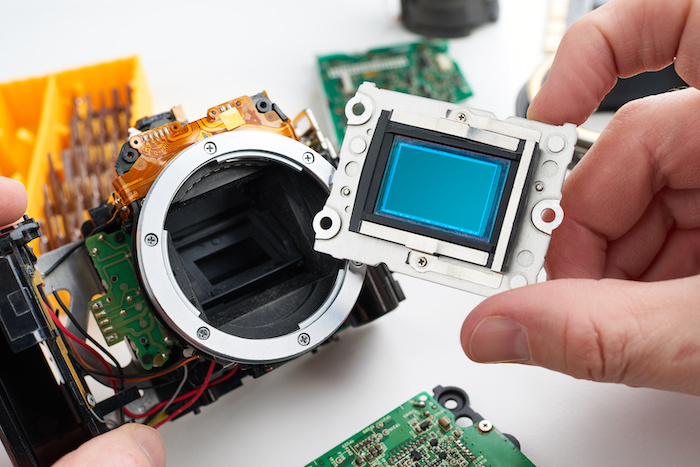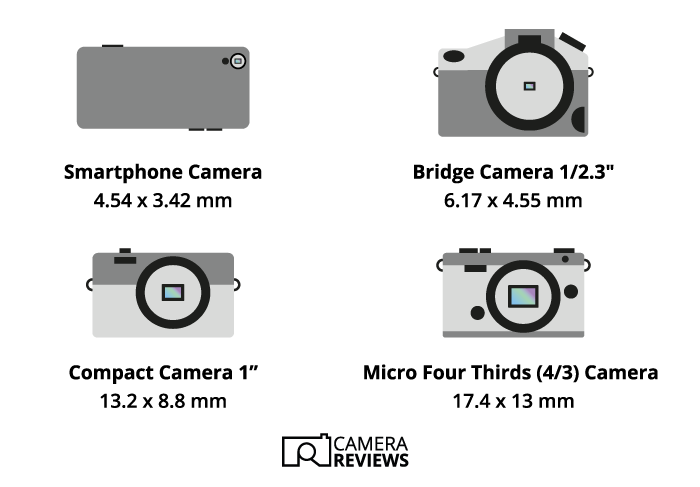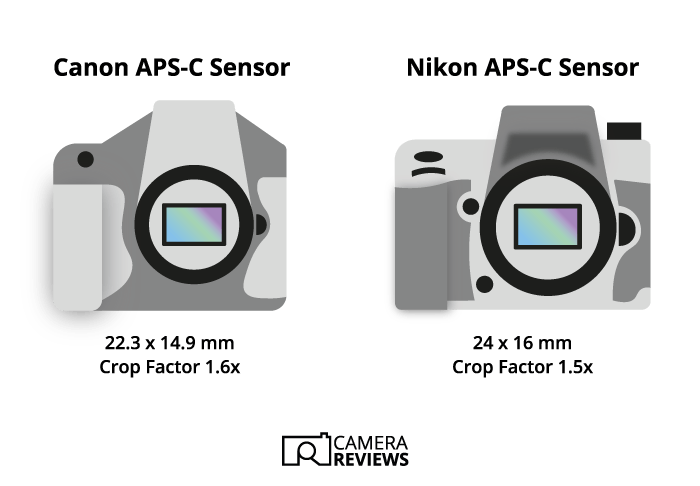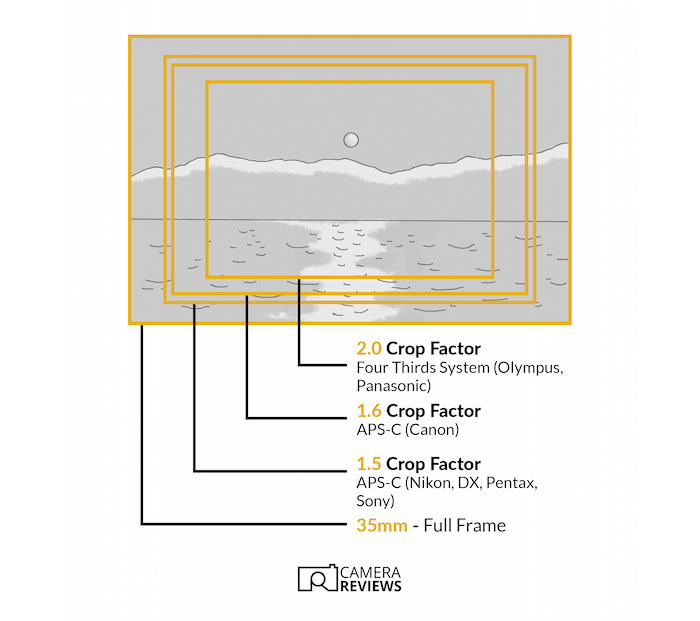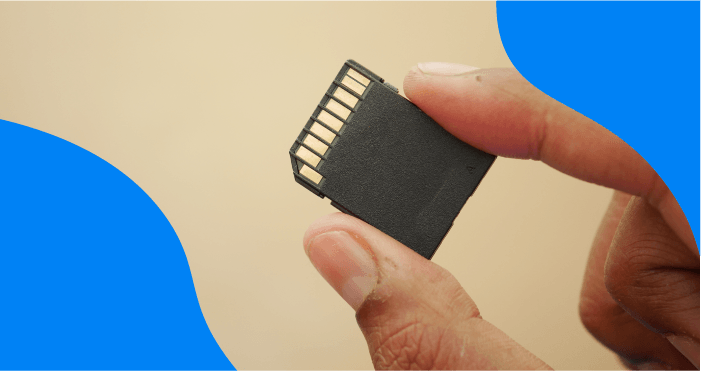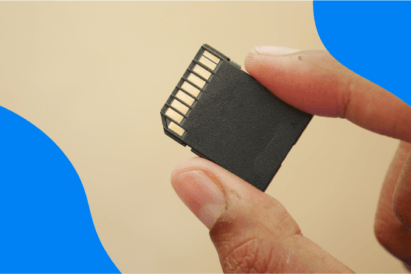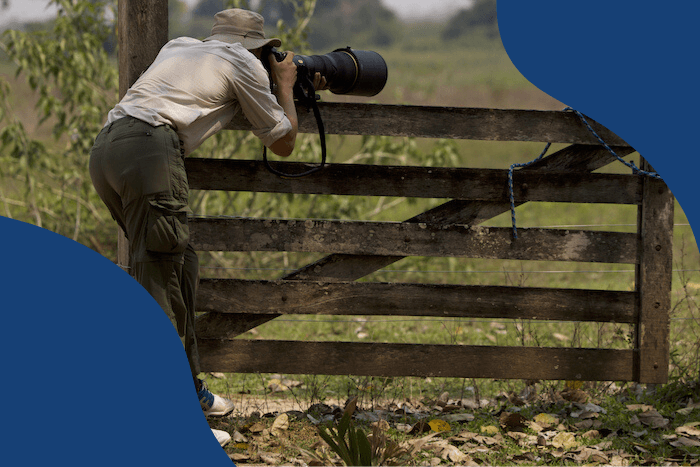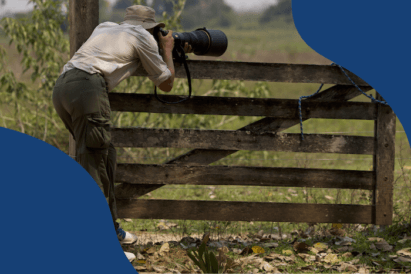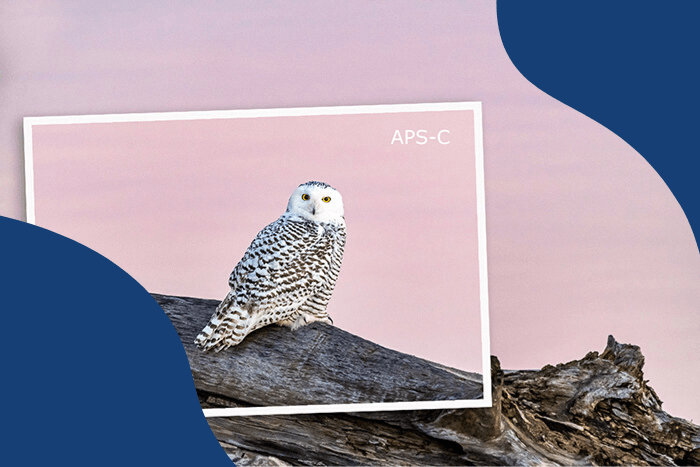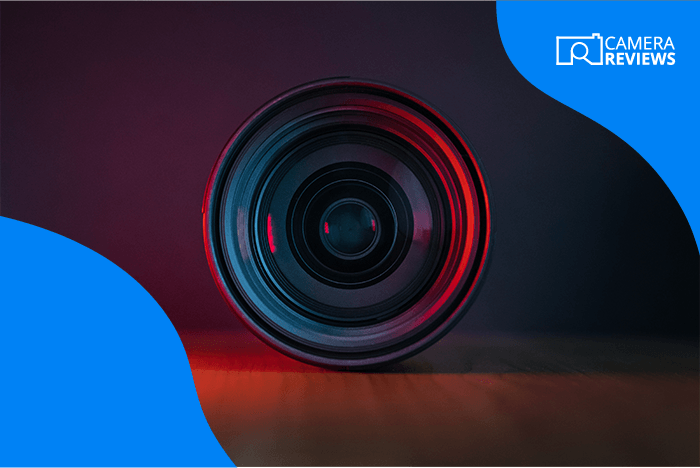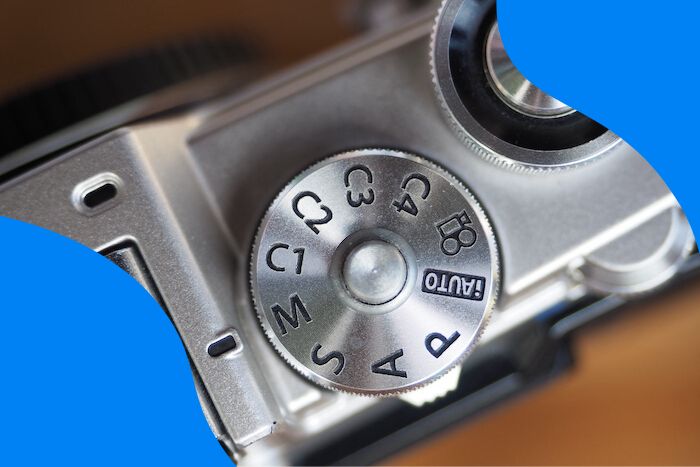Cameras and many other devices, including smartphones and drones, have all kinds of camera sensor sizes. This article will try to make sense of the alphabet soup. And it will help you understand the impact of having a larger or smaller sensor.
The basic trade-off between a large and small sensor is image quality and convenience. Full frame cameras suit professional photographers. And beginners and enthusiasts generally prefer crop sensor models.
The latter has smaller, lighter camera bodies and lenses and are generally less expensive. But nothing beats the convenience of a smartphone. The best camera is always the one you have with you!
What Are the Different Digital Camera Sensor Sizes and Types?
There are many different sensor sizes. And even “standard” sensors often have non-standard sizes and names! (Jump to the end, where we talk about sensor measurements and naming.)
For example, many different versions of APS-C sensors exist. And Nikon’s crop sensor is a bit bigger than Canon’s. The Nikon APS-C format (DX) crop factor is 1.5x, but Canon’s is 1.6x.
Drones have different sensor types depending on the size. But 1″, 1/2″, 1/2.3″, or Micro Four Third (MFT) sensors are common. GoPros have sensors of 1/2.3 or 1/1.9″ (GoPro Hero11 Black).
To make sense of all this, it’s probably best to talk about and group the sensors by camera type. We’ll list them from smartphones to large-format cameras. We’ll list their specs, discuss their benefits, and then review the pros and cons of a larger vs. small sensor.
1. Smartphone Camera Sensor Size
- Type: 1/3.2″ (iPhone 5)
- Diagonal: 5.68 mm
- Dimensions: 4.54 x 3.42 mm
- Aspect ratio: 4:3
- Area: 15.53 mm²
- Crop factor: 7.6x
Smartphones now have three different lenses and can take pretty good pictures (and even 4K video!). But their sensors are tiny—especially compared to full frame sensors.
Different manufacturers use different sensor sizes in different models. But they’re generally around the size of the 1/3.2″ sensor in the iPhone 5. This has a 4:3 aspect ratio, which is typical of smartphone sensors. (Apple’s iPhone 14 has a 1/1.28″ sensor.)
Full frame sensors have an aspect ratio of 3:2. But that can look a bit too “long and thin” in portrait format. It’s just a holdover from the days of 35mm film, which happened to have that particular aspect ratio.
Smartphone sensors struggle in low light. But Apple has tried to improve image quality by introducing updated software algorithms. These work pretty well. But smartphones will never match the low-light performance of cameras with much larger sensors.
2. Bridge Camera Sensor Size
- Type: 1/2.3″ (Sony Cyber-shot DSC-W330, GoPro Hero3, Pentax Q, etc.)
- Diagonal: 7.66 mm
- Dimensions: 6.17 x 4.55 mm
- Aspect ratio: 4:3
- Area: 28.07 mm²
- Crop factor: 5.6x
Bridge cameras (superzooms) have a fixed lens but an enormous zoom range. This makes them ideal for close-ups or subjects far away. The “optical zoom” uses the entire sensor.
But it has to be small to get the crazy magnification possible with some bridge cameras. That’s because you’re effectively just “zooming in” on what would be only a small part of the sensor on a full frame camera.
Again, sensors differ depending on the particular manufacturer and model. But bridge camera sensors generally have a 4:3 aspect ratio.
Just beware of the “digital zoom.” This is often advertised as a way of extending the zoom range.
It works by restricting the size of the active pixel area, meaning image quality suffers. It’s much better to take shots at the limit of the optical zoom and then crop them later in post-processing.
3. Compact Camera Sensor Size
- Type: 1″ (Nikon CX sensor format, Sony RX10 IV, DJI Air S2, etc.)
- Diagonal: 15.86 mm
- Dimensions: 13.2 x 8.8 mm
- Aspect ratio: 3:2
- Area: 116.16 mm²
- Crop factor: 2.7x
Compact cameras (or “point-and-shoots“) actually have larger sensors than superzooms. But they won’t give you the same magnification.
They again have fixed lenses. And the relatively small sensors allow them to be so “compact” that they easily fit in your purse or pocket.
Typical compact cameras have an aspect ratio of 3:2, like APS-C and full frame cameras.
4. Micro Four Thirds Sensor Size (Olympus)
- Diagonal: 21.64 mm
- Dimensions: 17.4 x 13 mm
- Aspect ratio: 4:3 (but can be 3:2 or 16:9 on some models)
- Area: 226.2 mm²
- Crop factor: 2.0x
Olympus and Eastman Kodak originally invented the Four Thirds sensor standard for DSLRs. Leica, Olympus, and Panasonic all produced digital camera bodies in that format. But the Micro Four Thirds sensor has now replaced it.
Panasonic and Olympus released this format in 2008 for mirrorless cameras and camcorders. You can now get digital camera bodies from several manufacturers. But Olympus is the main one.
One of the most useful facts about the Micro Four Thirds standard is that it’s the smallest sensor in interchangeable-lens cameras. You only get fixed lenses on smartphones, superzooms, and point-and-shoots.
This means buying a Micro Four Thirds system is more expensive. But it allows the flexibility to use radically different focal lengths for landscapes or portraits, for example.
In fact, Olympus has a range of Micro Four Thirds cameras with sophisticated features. This includes the flagship Olympus OM-1.
It has a 20.4 MP sensor, subject tracking, five-axis image stabilization, 4K video, and IP53 dust and splash resistance. You can even take 50 and 80 MP images in Tripod High Res mode.
5. Canon APS-C Sensor Size
- Diagonal: 26.8 mm
- Dimensions: 22.3 x 14.9 mm
- Aspect ratio: 3:2
- Area: 332.27 mm²
- Crop factor: 1.6x
APS-C sensors have a 3:2 aspect ratio. And they are very common, especially among beginners and intermediates.
The cameras and lenses are generally smaller, lighter, and less expensive than full frame gear. But the APS-C sensor is more than 60% smaller. So this makes it harder to get high-resolution, noise-free images for large prints.
Canon has a range of around 20 versions of cameras with APS-C sensors. It includes the Canon EOS 90D, Canon EOS 7D Mark II, Canon EOS Rebel SL3, and Canon EOS Rebel T8i.
6. Nikon APS-C Sensor Size (DX)
- Diagonal: 28.8 mm
- Dimensions: 24 x 16 mm
- Aspect ratio: 3:2
- Area: 384 mm²
- Crop factor: 1.5x
The Nikon equivalent of the APS-C sensor size is the DX format. It is slightly larger than the Canon APS-C standard. But there’s no significant improvement in image quality or noise reduction.
7. Canon APS-H Sensor Size
- Diagonal: 34.2 mm
- Dimensions: 28.7 x 18.6 mm
- Aspect ratio: 3:2
- Area: 533.8 mm²
- Crop factor: 1.3x
This is a slightly larger variation of Canon’s usual APS-C format. It appeared in various versions of the Canon EOS-1D in the early 2000s. It was an attempt to make the most of the company’s EF lenses, designed for full frame sensor cameras.
It also meant the EOS-1D could shoot at 8 fps at a time when the full frame flagship model (the EOS-1Ds) could only manage 3 fps.
8. Full Frame Sensor Size
- Diagonal: 43.27 mm
- Dimensions: 36 x 24 mm
- Aspect ratio: 3:2
- Area: 864 mm²
- Crop factor: 1.0x
The full frame format originated with 35mm film. It took its name from the width of the film, including the sprockets. It has nothing to do with the width of the frame, which is 36 mm. That’s just a rather confusing coincidence!
Full frame is the “gold standard” of modern cameras. Professionals use these cameras for every genre of photography, from portraits to wildlife. Even though it’s not the largest camera sensor size, it’s the most popular.
It hits the “sweet spot” between image quality and other features. The full frame sensor is big enough to provide the resolution both amateurs and pros need. But it’s also small enough to allow fast frame rates.
Most photographers aspire to own full frame cameras at some point. But these are much more expensive than Micro Four Thirds or APS-C models. That’s an inevitable trade-off, given the larger sensor and all the accompanying electronics.
But the mirrorless revolution shows it is possible to make smaller full frame camera bodies and lenses. This means more and more money is being poured into mirrorless cameras and less and less into DSLRs.
One wildlife photographer I know is almost being “forced” into going mirrorless. This is because his existing DSLRs will never be upgraded!
9. Medium Format Sensor Size
- Diagonal: 54.78 mm (e.g., Fujifilm GFX100)
- Dimensions: 43.8 x 32.9 mm
- Aspect ratio: 4:3
- Area: 1,441.02 mm²
- Crop factor: 0.8x
Medium format cameras have large 4:3 sensors. But they tend to be bigger and heavier than full frame models with lower frame rates.
They are also much more expensive. That’s fine if you’re a professional landscape photographer. But it’s not convenient enough to become popular.
10. Large Format Sensor Size
- Diagonal: 150 mm
- Dimensions: 90 x 120 mm
- Aspect ratio: 4:3
- Area: 10,800 mm²
- Crop factor: 0.3x
You can pick up a light Intrepid 4×5 camera for only a few hundred dollars. But large format film and digital cameras are generally only used for specialist applications.
These include billboard ads, fine art photography, and scientific imaging. The dimensions mean you can print images in much larger sizes. A large format is also ideal for revealing richer tones and the highest levels of detail.
Pros and Cons of a Large Sensor vs Small Sensor
There are four benefits to a larger sensor:
- Better resolution
- Noise reduction
- Better dynamic range
- Resistance to diffraction
You also get less depth of field for a given field of view. This may be good if you want to isolate your subject.

A larger sensor can squeeze in more of them for any pixel size (photosite or sensel). That’s what provides the extra resolution.
But you must trade off resolution against low-light performance and dynamic range. Resolution depends on the number of pixels. But the other attributes depend on the pixels’ size.
In other words, if you stuff as many pixels onto the sensor as possible, the pixels are smaller. So you get more noise and less detail in highlights and shadows.
The same happens if you put the same number of pixels from a large sensor on a smaller one. Less area means smaller pixels. So you get more noise and less dynamic range on a small sensor.
But there’s a price to pay for larger sensors. Silicon sheets cost thousands of dollars. And you can’t get as many full frame sensors from each sheet because of their size. So this makes larger sensors much more expensive.
Magnification (Crop Factor) With Smaller Sensors
Smaller sensors do have some advantages. They effectively “zoom in” on the image projected onto the back of the camera. So you don’t need such long lenses to get the same magnification.
One way to measure this extra magnification is using the “crop factor.” This is simply the number you get when you divide the diagonal length of a full frame sensor (36 x 24 mm, or 43.27 mm from corner to corner) by that of another sensor.
If you multiply a lens’s focal length by the crop factor, you get the “effective” focal length on a full frame camera. Let’s take the example of a 200mm lens on a Micro Four Thirds (MFT) camera with a crop factor of 2.0x.
The effective focal length will be 200 x 2 = 400mm. That means objects will appear much closer and, thus, larger. This is useful for taking pictures of small and distant objects.
Here’s another way of looking at it. We can look at two shots.
One taken with a Micro Four Thirds camera at 200mm and another with a full frame camera at 400mm would have the same field of view. In other words, at the same distance, the framing would be exactly the same.
But the crop factor isn’t a good guide to the size of each sensor. This measures the relative length of the diagonal. But it’s the area of the sensor that really matters. If you double the dimensions, you must multiply the area by four.
A Micro Four Thirds sensor may have a crop factor of 2.0x. But its area is only 226.2 mm² compared to 864 mm² for full frame sensors. That means a full frame sensor is almost four times as large!
Smaller Sensors Means Smaller Lenses
Another benefit of a smaller sensor is that the lenses don’t have to be as big and heavy. Because of the narrower field of view, light from the edges of a full frame lens won’t reach the sensor.
Once manufacturers knew they could save on glass, they started making lenses that only worked on crop-sensor cameras. Different companies use different letters, but here are some of the main ones:
- Canon: EF-S, EF-M
- Nikon, Tokina: DX
- Pentax: DA
- Samsung: NX
- Sigma: DC
- Sony, Konica Minolta: DT, E
- Tamron: Di II
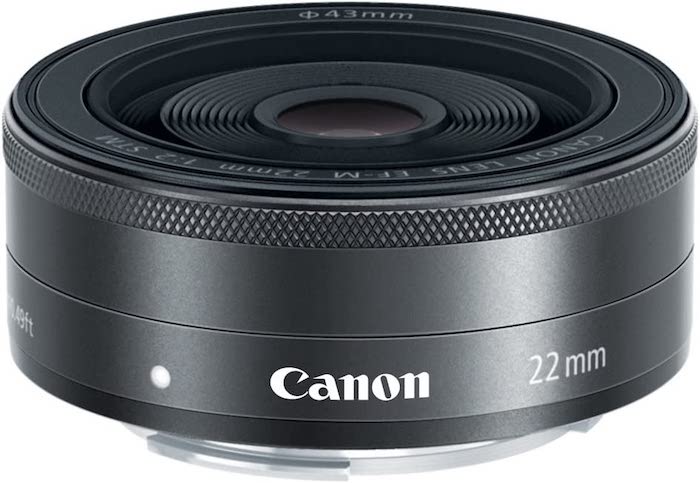
Small Sensor’s Fast Frame Rate vs Big Sensor’s Resolution
Finally, crop sensors produce smaller image files. So they take less time to write to the memory card. This means cameras can have a higher frame rate and deeper buffer—if you’re willing to compromise on resolution and noise performance.
There’s always been a trade-off between resolution and frame rate. And very few manufacturers have been able to avoid it. But readout speeds are improving all the time.
The Sony a1 mirrorless camera can still shoot at 30 fps in a lossy, RAW format even though it has a 50.1 MP sensor. It’s only a matter of time before Nikon, Canon, and other manufacturers make the same technological advances.
The improvements should be available in flagship models in the next couple of years. They may even turn up inside affordable cameras for enthusiasts and beginners.
Sensor Measurements (Making Sense of Their Names)
One of the most confusing things about sensors is their names. Why are some measured in inches (“) and others in millimeters (mm)? Why do they have different aspect ratios?
What does APS-C stand for? What kind of a fraction is 1/3.2″? Why aren’t 1” sensors one inch wide?
A short answer is that hundreds of companies worldwide designed their own sensors. This meant they all had their own commercial and cultural imperatives.
For example, US companies used imperial units (inches). And European companies used the metric system (millimeters).
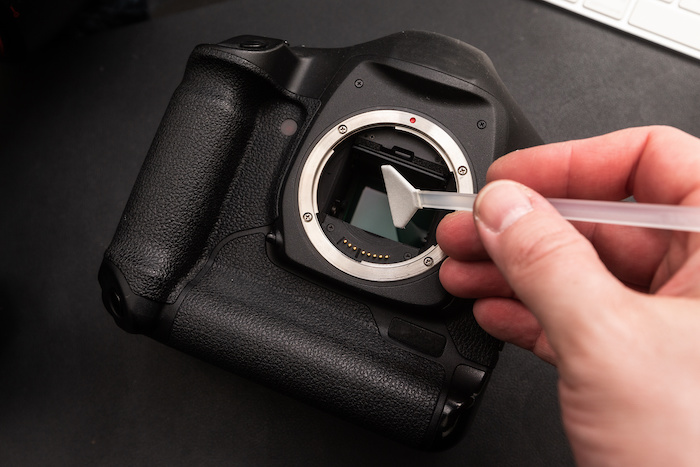
The 3:2 aspect ratio also came from a historical accident. It just happened to be the aspect ratio of 35mm film. So digital cameras “borrowed” it to maintain a uniform frame size.
And APS is an abbreviation for Advanced Photo System. This film format was designed in 1996 by Eastman Kodak, Fujifilm, Agfa, and Konica. So there were three sizes:
- H for High Definition was 30.2 x 16.7 mm with an aspect ratio of 16:9 (1.25x crop)
- C for Classic was 25.1 x 16.7 mm with an aspect ratio of 3:2 (1.44x crop)
- P for Panoramic was 30.2 x 9.5 mm with an aspect ratio of 3:1 (1.36x crop)
Modern digital cameras still use APS-C and APS-H sensors. But the exact measurements vary by manufacturer.
Why an Optical Format is Used
Another historical accident is using “optical” format names for sensors using fractions and inches. Several smaller sensors were invented in the ’50s, ’60s, ’70s, and ’80s.
And vacuum tubes were used rather than CCD or CMOS sensors in video and TV cameras. Each tube was round and made of thick glass. And the image was a smaller rectangle within that circular cross-section.
The image sensor size was taken from the outer diameter of the tube. And it conveniently made the sensor sound 50% bigger than it actually was!
Hence, the 4/3″ or Four Thirds sensor is only 0.85″ (or 21.64 mm) from corner to corner. But it takes its name from a tube that had to be 4/3″ (or 33.9 mm) wide.
Conclusion
The proliferation of camera sensor sizes over the last few years has confused many people. There are many types of cameras, from smartphones to large-format cameras. And they all use different sensors—often with strange names!
If you’re looking to buy a new camera, you could easily spend hours and hours comparing the different formats. But the trade-off is essentially simple—it’s resolution vs convenience. Used camera gear is always an option too, but be cautious!
Look at your current needs and budget. And decide what’s best for right now. I started with a bridge camera. Then I moved on to a full frame DSLR camera. And finally, I switched to mirrorless cameras. You can probably skip the DSLR, but everyone will take a different path.

Large Sensor Sizes vs Small Sensor Sizes
Larger sensors mean larger camera bodies and lenses, which are less portable and more expensive. Mirrorless, interchangeable-lens cameras are generally smaller and lighter than DSLRs. But they’re bigger than most compacts and superzooms (bridge cameras).
Crop sensor models boast enormous zoom ranges and high frame rates. But larger formats offer better image quality. The depth of field is shallower (for a given field of view), which portrait and wildlife photographers appreciate.
You also get higher resolution and better low-light performance, particularly at high ISOs. But there’s a trade-off here, too. If you pack the sensor with pixels, the pixel pitch gets smaller. This reduces the light-gathering ability. And it means more noise and less dynamic range.
We hope our article has helped you get to grips with understanding different camera sensor sizes! To continue learning about photography basics, check out posts on the different parts of a camera or DSLR vs mirrorless for beginners. We have some great buying guides on skiing cameras or nature photography cameras to check out too!


